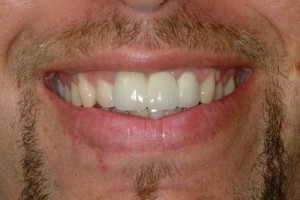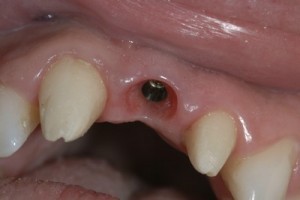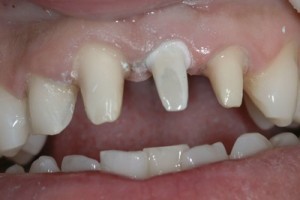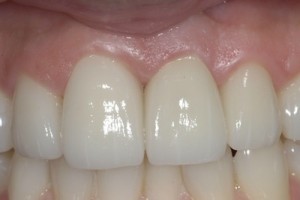By Dr. Parsa T. Zadeh
Years of wear, an accident, infection or other unfortunate events can cause people to lose teeth. This is often an unbearable and intolerable inconvenience. There are permanent solutions to this problem, however, as implants offer a unique and popular opportunity for patients who are missing teeth. They replace the missing tooth and offer a fully natural look, especially with zirconia implants, that no other dental appliance can truly match. There are a number of options if you decide to get dental implants in in Beverly Hills, California.
Dental implants in what is called the smile zone, present a unique set of challenges to the implant dentist. As dentists, we see many emergencies for various conditions. Many patients insist on being seen over the weekend or at night, usually for a lost or severely damaged tooth. You might have thought that a toothache was the most common dental emergency, but many people are willing to put up with some pain before seeing the dentist. I find that it is often broken or missing teeth that prompt requests for late-night or emergency weekend visits.

Kay 1) Old fake looking bridge for number nine (central incisor).

Kay 2) Implant placed at bone level for optimum aesthetics.
Important Facts About Dental Implants
When a root form titanium or zirconia implant is placed in the jawbone, it takes about one and a half to six months to fuse (osseointegrate) to the jawbone. During this period, traditionally, either the space above the implant is left empty or a removable partial denture (a flipper made for the patient to wear) is used. For most, the first option is totally unacceptable for their front teeth and the second option is a tremendous inconvenience. Even today, many patients are needlessly made to wear a removable flipper because the surgeon who places the dental implant in the jawbone either is not equipped nor skilled enough to fabricate a durable, comfortable fixed tooth for the healing appliance.
The dentists who have limited their practice to only the surgical aspect of implant placement usually do not have the materials and necessary training to restore the gap with a comfortable and fixed option. The patient is then forced to make a separate appointment at a later date with a general or cosmetic dentist who is trained to fabricate crowns to replace missing teeth. For years now, I have been placing frontal dental implants and providing provisional restoration all in the same sitting so that my patients never walk out of the office without a functional, fixed tooth.
This approach is called immediate loading, or more commonly, same-day dental implants. Immediate implants also help reduce recovery time, subsequent office visits and other issues that can occur when multiple dentists are involved with installing a dental implant. In most cases and due to their simpler root structure (front teeth generally only have one or two roots), when replacing a front tooth, I practice immediate loading. When patients follow my instructions in terms of rest and taking antibiotics, my success rate is perfect. Very few patients would tolerate having a missing front tooth for very long, which is why same-day loading is perfect for this sort of implant. In cases that, whether for technical or medical reasons, the implant cannot be immediately loaded, I fabricate a bonded fixed bridge over the implant site before the patient is dismissed so that the patient can leave the office with a fixed tooth.

Kay 3) I shaped the abutment for perfect marginal adaptation.

Kay-4) Unparalleled aesthetics — his smile is fully restored and natural.
Dental Implant Considerations
A consideration in front teeth implants is their high aesthetic demand. As far as clinical skills, knowledge and experience are concerned, this is where the rubber meets the road. Look at the photograph labeled natural-looking single tooth implant. Also pay attention to Kay’s pictures. Kay, an otherwise handsome young man, was presented by a previous dentist with an old, fake-looking bridge for tooth number nine.
To correct this, I placed an implant at bone level for him (Kay 2). To avoid the usual grayish discoloration that we see at the neck of titanium implants, I used a zirconia abutment. Because the implant was at the bone level and the final 2 millimeters of the implant (the emergence profile) was in zirconia, no grayish discoloration was shown through the gum margin. I prepared the zirconium-based implant for optimal position of the zenith (the highest part of arch of the gum). The result is an astonishingly natural-looking and indiscernible emulation of the adjacent natural tooth (Kay 4). A great degree of skill and experience is involved in shaping the emergence profile of the front tooth implant so as to preserve the interdental papilla (the gum extending down from in between the teeth) where it exists (Jill’s case) or to create a pair where there is a flat ridge (Kevin’s case).
Zirconia implants, often miscalled zirconium implants, are a more attractive option as there is little risk of an unnatural greyish color appearing at the neck of the tooth. While titanium implants have been the standard bearer for years, full zirconia implants have been becoming increasingly popular due to their aesthetic beauty and their higher biocompatibility. What is biocompatibility? A small margin of patients (4-5%) have an allergy to titanium, which does not present in ceramic based implants. This is why, even if you do not know about titanium allergies or may even not have one at all, I still often recommend zirconia implants, especially for front teeth, as they have a far more natural appearance and are unlikely to cause any sort of reaction.
Implants for Molars and Back Teeth
I have gone over front teeth in depth here, but there are also things to consider for back teeth. As back teeth are often less visible, patients sometimes ignore them if they are missing or damaged. However, our back teeth are essential to our ability to chew and also maintain balance in the mouth. While front teeth are generally simple and can quickly and easily be replaced with a dental implant, back teeth have a number of considerations as well. For one, most of our back teeth have a complicated four root system, which is why 4-in-1 implants are frequently used for replacing our molars. Also, due to their size, they are extremely important to preventing spacing that can cause other teeth to become loose and even fall out. And thanks to recent advances in dental technology, same day loading can be done for molars as well.
How Much Do Dental Implants Cost?
Implants can be expensive, but fortunately, many insurance carriers and Medicare may cover at least part of the cost. On average, a dental implant should run $2,000-$3,000 for both the abutment and the crown before anything is covered by insurance. It also varies heavily on the type of work that needs to be done to safely install the implant.
Discount dental implants are something that should raise an alarm, as implants are something that takes a great deal of skill, patience and practice, and many dentists do not do implants simply because the process is so complicated to do correctly. Bone grafts, multiple implants, extraction of failing teeth and so on can raise the cost of an implant treatment. The important thing to remember when considering the cost of an implant, is that you are being given something that you will likely be using for the rest of your life, if cared for properly. The costs are negligible too, compared to the potential bone loss and additional loss of teeth or damage to your appearance from teeth shifting caused by the lack of pressure and balance in the mouth.
If you have a need or are interested in learning more about dental implants, do not hesitate to call us at 310-273-2020 or schedule an appointment with our dentist through our appointment coordinator. You can read more about implant dentistry in a recent article written by our team here.

